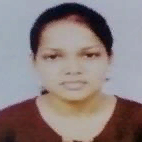International Journal of Engineering and Manufacturing (IJEM)
IJEM Vol. 11, No. 6, 8 Dec. 2021
Cover page and Table of Contents: PDF (size: 715KB)
Parametric Optimization of Drilling Parameters in Aluminum 6061T6 Plate to Minimize the Burr
Full Text (PDF, 715KB), PP.36-47
Views: 0 Downloads: 0
Author(s)
Index Terms
Drilling, Burr Minimization, Response Surface methodology, Optimization, ESWSA.
Abstract
In the manufacturing, process a burr has been observed during the drilling through a hole in an aluminum bar. From the view of the life of a product, minimization of the burr should be significant. So in this research main aim is to identify how input parameters: drill diameter, point angle & spindle speed influenced output parameters burr height & thickness. To execute this operation a total of 27 examinations on an Aluminum 6061T6 plate is taken. Overall research performed into two stages. In first stage, Surface response methodology is used to design two objective functions for burr height & thickness with the help of input parameters and then these two objective functions combined to construct a single objective function. In next stage improved version of elephant swarm optimization (ESWSA) algorithm is applied to get the optimum input parameters. The predicted output variable after the optimization techniques (Test 2 & Test 3) further checked with experimental result to determine the accuracy of the proposed model. In a conclusion section it is seen that the average error of drill diameter, drill point angle & spindle speed are 1.72%, 3.84% & 3.89% respectively with average RMSE is 2.56 *10^-6. For further validation of effectiveness of proposed model is also compared with the state of art techniques in the field burr minimization.
Cite This Paper
Pijush Dutta, Madhurima Majumder, " Parametric Optimization of Drilling Parameters in Aluminum 6061T6 Plate to Minimize the Burr ", International Journal of Engineering and Manufacturing (IJEM), Vol.11, No.6, pp. 36-47, 2021. DOI: 10.5815/ijem.2021.06.04
Reference
[1]Nakayama K, Arai M. Burr formation in metal cutting. CIRP Annals 1987;36:33–6.
[2]Pratim SP, Das S. Burr minimization in face milling: an edge bevelling approach. Proceedings of the Institution of Mechanical Engineers, Part B: Journal of Engineering Manufacture 2011;225:1528–34.
[3]Thakre AA, Soni S. Modeling of burr size in drilling of aluminum silicon carbide composites using response surface methodology. Engineering Science and Technology, an International Journal 2016;19:1199–205. https://doi.org/10.1016/j.jestch.2016.02.007.
[4]Gaitonde VN, Karnik SR, Achyutha BT, Siddeswarappa B. Genetic algorithm-based burr size minimization in drilling of AISI 316L stainless steel. Journal of Materials Processing Technology 2008;197:225–36.
[5]Kim J, Min S, Dornfeld DA. Optimization and control of drilling burr formation of AISI 304L and AISI 4118 based on drilling burr control charts. International Journal of Machine Tools and Manufacture 2001;41:923–36.
[6]Lekkala R, Bajpai V, Singh RK, Joshi SS. Characterization and modeling of burr formation in micro-end milling. Precision Engineering 2011;35:625–37.
[7]Ko SL, Chang JE, Kaipakjian S. Development of Drill Geometry for Burr Minimization In Drilling. CIRP Annals 2003;52:45–8. https://doi.org/10.1016/S0007-8506(07)60527-7.
[8]Lee SH, Lee S-H. Optimisation of cutting parameters for burr minimization in face-milling operations. International Journal of Production Research 2003;41:497–511. https://doi.org/10.1080/0020754021000042382.
[9]Narayanaswami R, Dornfeld D. Burr Minimization in Face Milling: A Geometric Approach. Journal of Manufacturing Science and Engineering 1997;119:170–7. https://doi.org/10.1115/1.2831092.
[10]Gaitonde VN, Karnik SR. Minimizing burr size in drilling using artificial neural network (ANN)-particle swarm optimization (PSO) approach. J Intell Manuf 2012;23:1783–93. https://doi.org/10.1007/s10845-010-0481-5.
[11]Gaitonde VN, Karnik SR, Rubio JCC, de Oliveira Leite W, Davim JP. Experimental studies on hole quality and machinability characteristics in drilling of unreinforced and reinforced polyamides. Journal of Composite Materials 2014;48:21–36.
[12]Gaitonde VN, Karnik SR, Siddeswarappa B, Achyutha BT. Integrating Box-Behnken design with genetic algorithm to determine the optimal parametric combination for minimizing burr size in drilling of AISI 316L stainless steel. The International Journal of Advanced Manufacturing Technology 2008;37:230–40.
[13]Dey B, Mondal N, Mondal S. Experimental Study to Minimize The Burr Formation in Drilling Process With Artifical Neural Networks (ANN) Analysis. IOP Conference Series: Materials Science and Engineering, vol. 377, IOP Publishing; 2018, p. 012120.
[14]Lee SH, Dornfeld DA. Prediction of burr formation during face milling using an artificial neural network with optimized cutting conditions. Proceedings of the Institution of Mechanical Engineers, Part B: Journal of Engineering Manufacture 2007;221:1705–14.
[15]De Souza AM, Sales WF, Ezugwu EO, Bonney J, Machado AR. Burr formation in face milling of cast iron with different milling cutter systems. Proceedings of the Institution of Mechanical Engineers, Part B: Journal of Engineering Manufacture 2003;217:1589–96.
[16]Kundu S, Das S, Saha PP. Optimization of drilling parameters to minimize burr by providing back-up support on aluminium alloy. Procedia Engineering 2014;97:230–40.
[17]Sakr M, Atwa W, Keshk A. Genetic-based Summarization for Local Outlier Detection in Data Stream. International Journal of Intelligent Systems & Applications 2021;13.
[18]Gaitonde VN, Karnik SR, Achyutha BT, Siddeswarappa B. GA applications to RSM based models for burr size reduction in drilling 2005.
[19]Gaitonde VN, Karnik SR, Achyutha BT, Siddeswarappa B. Genetic algorithm-based burr size minimization in drilling of AISI 316L stainless steel. Journal of Materials Processing Technology 2008;197:225–36.
[20]Mondal N, Mandal MC, Dey B, Das S. Genetic algorithm-based drilling burr minimization using adaptive neuro-fuzzy inference system and support vector regression. Proceedings of the Institution of Mechanical Engineers, Part B: Journal of Engineering Manufacture 2020;234:956–68. https://doi.org/10.1177/0954405419889183.
[21]Mondal N, Sardar BS, Halder RN, Das S. Observation of drilling burr and finding out the condition for minimum burr formation. International Journal of Manufacturing Engineering 2014;2014.
[22]Nandi AK, Davim JP. A study of drilling performances with minimum quantity of lubricant using fuzzy logic rules. Mechatronics 2009;19:218–32.
[23]Dutta P, KUMAR A. Design an intelligent flow measurement technique by optimized fuzzy logic controller. Journal Européen Des Systèmes Automatisés 2018;51:89–107. https://doi.org/10.3166/jesa.51.89-107.
[24]Dutta P, Kumar A. Intelligent calibration technique using optimized fuzzy logic controller for ultrasonic flow sensor. MATHEMATICAL MODELLING OF ENGINEERING PROBLEMS 2017;4:91–4. https://doi.org/10.18280/mmep.040205.
[25]Zhou H, Ding W-F, Li Z, Su H-H. Predicting the grinding force of titanium matrix composites using the genetic algorithm optimizing back-propagation neural network model. Proceedings of the Institution of Mechanical Engineers, Part B: Journal of Engineering Manufacture 2019;233:1157–67.
[26]Dutta P, Biswas SK, Biswas S, Majumder M. Parametric optimization of Solar Parabolic Collector using metaheuristic Optimization 2021;2:7.
[27]Mandal S, Dutta P, Kumar A. Modeling of liquid flow control process using improved versions of elephant swarm water search algorithm. SN Appl Sci 2019;1:886. https://doi.org/10.1007/s42452-019-0914-5.
[28]Ghosh A, Mandal S, Nandi G, Pal PK. Metaheuristic based parametric optimization of TIG welded joint. Transactions of the Indian Institute of Metals 2018;71:1963–73.
[29]Tahir NM, Ausat AN, Bature UI, Abubakar KA, Gambo I. Off-line Handwritten Signature Verification System: Artificial Neural Network Approach. International Journal of Intelligent Systems and Applications 2021;13:45–57.
[30]Dutta P, Kumar A. Design an intelligent calibration technique using optimized GA-ANN for liquid flow control system. Journal Européen Des Systèmes Automatisés 2017;50:449–70. https://doi.org/10.3166/jesa.50.449-470.
[31]Dutta P, Kumar A. Modeling and Optimization of a Liquid Flow Process using an Artificial Neural Network-Based Flower Pollination Algorithm. Journal of Intelligent Systems 2020;29:787–98. https://doi.org/10.1515/jisys-2018-0206.
[32]DUTTA P, KUMAR A. Study of optimized NN model for liquid flow sensor based on different parameters, in International Conference on Materials ,Applied Physics & Engineering (ICMAE 2018).
[33]DUTTA P, Majumder M. AN IMPROVED GREY WOLF OPTIMIZATION TECHNIQUE FOR ESTIMATION OF SOLAR PHOTOVOLTAIC PARAMETERS 2021.
[34]Dutta P, Mandal S, Kumar A. Comparative study: FPA based response surface methodology & ANOVA for the parameter optimization in process control. AMA_C 2018;73:23–7. https://doi.org/10.18280/ama_c.730104.
[35]Dutta P, Kumar A. Modelling of Liquid Flow control system Using Optimized Genetic Algorithm. Statistics, Optimization & Information Computing 2020;8:565–82. https://doi.org/10.19139/soic-2310-5070-618.
[36]Mandal S, Dutta P, Kumar A. Application of FPA and ANOVA in the optimization of liquid flow control process. Review of Computer Engineering Studies 2018;5:7–11. https://doi.org/10.18280/rces.050102.
[37]Zedan Y, Niknam SA, Djebara A, Songmene V. Burr Size Minimization When Drilling 6061-T6 Aluminum Alloy. vol. 3, 2012. https://doi.org/10.1115/IMECE2012-86412.
[38]Chauhan KPS. Experimental Investigation to Optimize Machining Parameters of Al 6061 Alloy. International Journal of Engineering Research & Technology 2017;6.

